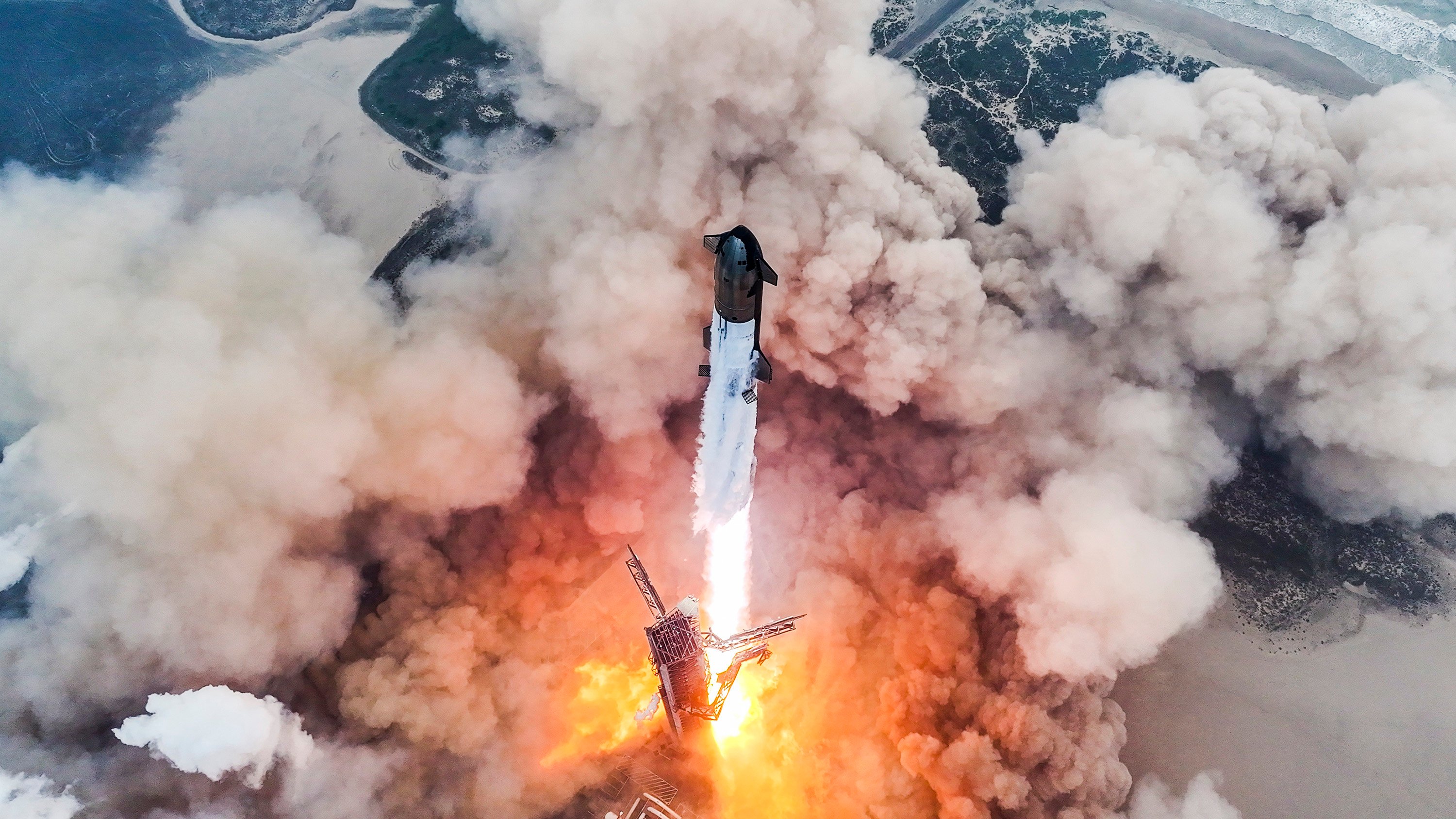Standing 121 metres (nearly 400ft) tall, the world’s most powerful rocket lifted off at 8.50am Eastern time from the US company’s test site in Boca Chica, Texas.
About eight minutes into the flight, Starship’s first stage – also known as the Super Heavy Booster – successfully landed in the waters of the Gulf of Mexico, despite the failure of one of its 33 engines at ignition.
More than an hour later, the second stage of the rocket splashed down in the Indian Ocean in a controlled manner, although its heat insulation tiles were severely burned during atmospheric re-entry.
“How powerful and breathtaking,” a Chinese space start-up employee wrote on her Weibo account.
A Beijing-based rocket engineer, who spoke to the South China Morning Post on the condition of anonymity, said he would give the flight’s achievement a score of 90 out of 100.
“With this flight, Starship has completed 60 per cent of its work towards the ultimate goal,” he said.
State-owned China Space News hailed Starship’s performance as “approaching maturity” and said it had “surpassed the space shuttle to become the largest and most massive re-entry spacecraft in human history”.
The report noted that the rocket was making “remarkable progress” with each of its test flights and could be “one step away from full reusability”.
The rocket came closer to a sea landing on its third flight in March, but its first stage went into an uncontrollable spin before splashdown while failed heat shields caused the second to disintegrate.
Despite the success of Starship’s fourth attempt, its overall progress has not met expectations, especially for Artemis III, the first planned US crewed moon landing mission since Apollo 17 in 1972, the China Space News article said.
It said SpaceX’s biggest challenge after the launch-re-entry-reusability tests would be to master how to refuel the mammoth rocket multiple times after it had left the planet. According to the company’s latest plan, in-orbit refuelling tests will not begin until 2025.
Last week, Japanese billionaire Yusaku Maezawa cancelled his trip to circle the moon in a Starship rocket, originally scheduled for 2023. “I feel terrible making the crew members wait longer,” he wrote in a statement.


.png)
No comments:
Post a Comment